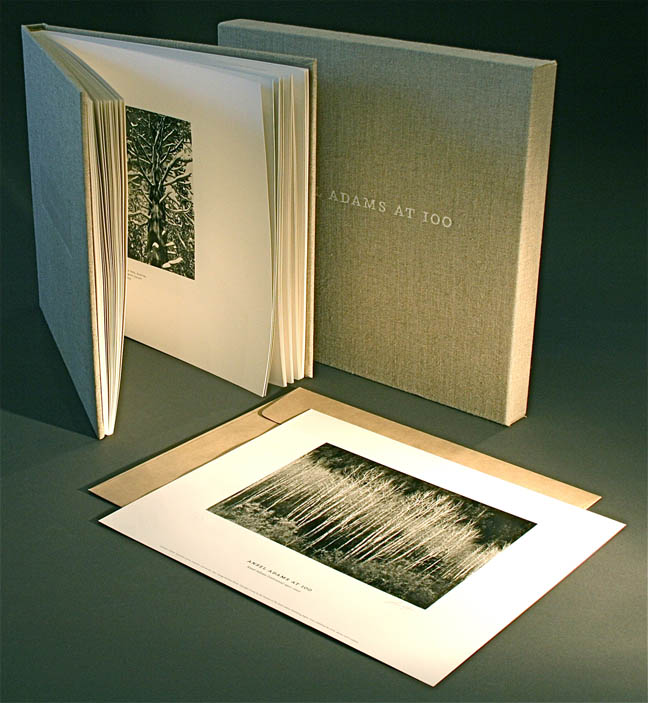

Title: Ansel Adams at 100 photography book curated by John Szarkowski
Shipping: $29.00
Artist: N/A
Period: Contemporary
History: N/A
Origin: N/A
Condition: Excellent
Item Date: 1902 to 1984
Item ID: 3253
Ansel Adams at 100 by John Szarkowski One of the best large format photography books ever made, accompanied the AA centennial exhibit curated by the late John Szarkowski. Includes many rare and unknown images from Adams' early years. Destined to be the definitive book on this great American artist, this book is authored and edited by the preeminent photographic curator of the 20th century. John Szarkowski has painstakingly selected what he considers Adams' finest work and has attempted to find the single best photographic print of each. This is the first serious effort to focus on Adams' achievements as an artist since his death in 1984. Hardcover: 200 pages, Linen Slipcase. 114 tritone photographs. w/ Limited Edition Lithograph. Measures 13" x 15". Little, Brown & Company
Link: http://en.wikipedia.org/wiki/Ansel_Adams
Ansel Easton Adams (February 20, 1902 – April 22, 1984) was an American photographer and environmentalist, best known for his black-and-white photographs of the American West, especially in Yosemite National Park. One of his most famous photographs was Moon and Half Dome, Yosemite National Park, California.
With Fred Archer, Adams developed the Zone System as a way to determine proper exposure and adjust the contrast of the final print. The resulting clarity and depth characterized his photographs and the work of those he taught the system. Adams primarily used large-format cameras, despite their size, weight, setup time, and film cost, because their high resolution helped ensure sharpness in his images.
Adams founded the Group f/64 along with fellow photographers Edward Weston and Imogen Cunningham, which in turn created the Museum of Modern Art's department of photography. Adams's timeless and visually stunning photographs are reproduced on calendars, posters, and in books, making his photographs widely recognizable.
In 1927, Adams contracted for his first portfolio, Parmelian Prints of the High Sierras, in his new style, which included his famous image Monolith, the Face of Half Dome, taken with his Korona view camera using glass plates and a dark red filter (to heighten the tonal contrasts). On that excursion, he had only one plate left and he “visualized” the effect of the blackened sky before risking the last shot. As he stated, “I had been able to realize a desired image: not the way the subject appeared in reality but how it felt to me and how it must appear in the finished print”. As he wrote confidently in April 1927, “My photographs have now reached a stage when they are worthy of the world’s critical examination. I have suddenly come upon a new style which I believe will place my work equal to anything of its kind.”
With the sponsorship and promotion of Albert Bender, an arts-connected businessman, Adams’s first portfolio was a success (earning nearly $3,900) and soon he received commercial assignments to photograph the wealthy patrons who bought his portfolio. Adams also came to understand how important it was that his carefully crafted photos were reproduced to best effect. At Bender’s invitation, he joined the prestigious Roxburghe Club, an association devoted to fine printing and high standards in book arts. He learned much about printing techniques, inks, design, and layout which he later applied to other projects. Unfortunately, at that time most of his darkroom work was still being done in the basement of his parents’ home, and he was somewhat limited by barely adequate equipment.
After a cooling off period with Virginia Best during 1925–26, during which he had short-lasting relationships with various women, many of them students of colleague Cedric Wright, he married Virginia in 1928. The newlyweds moved in with his parents to save expenses. His marriage also marked the end of his serious attempt at a musical career, as well as her ambitions to be a classical singer.